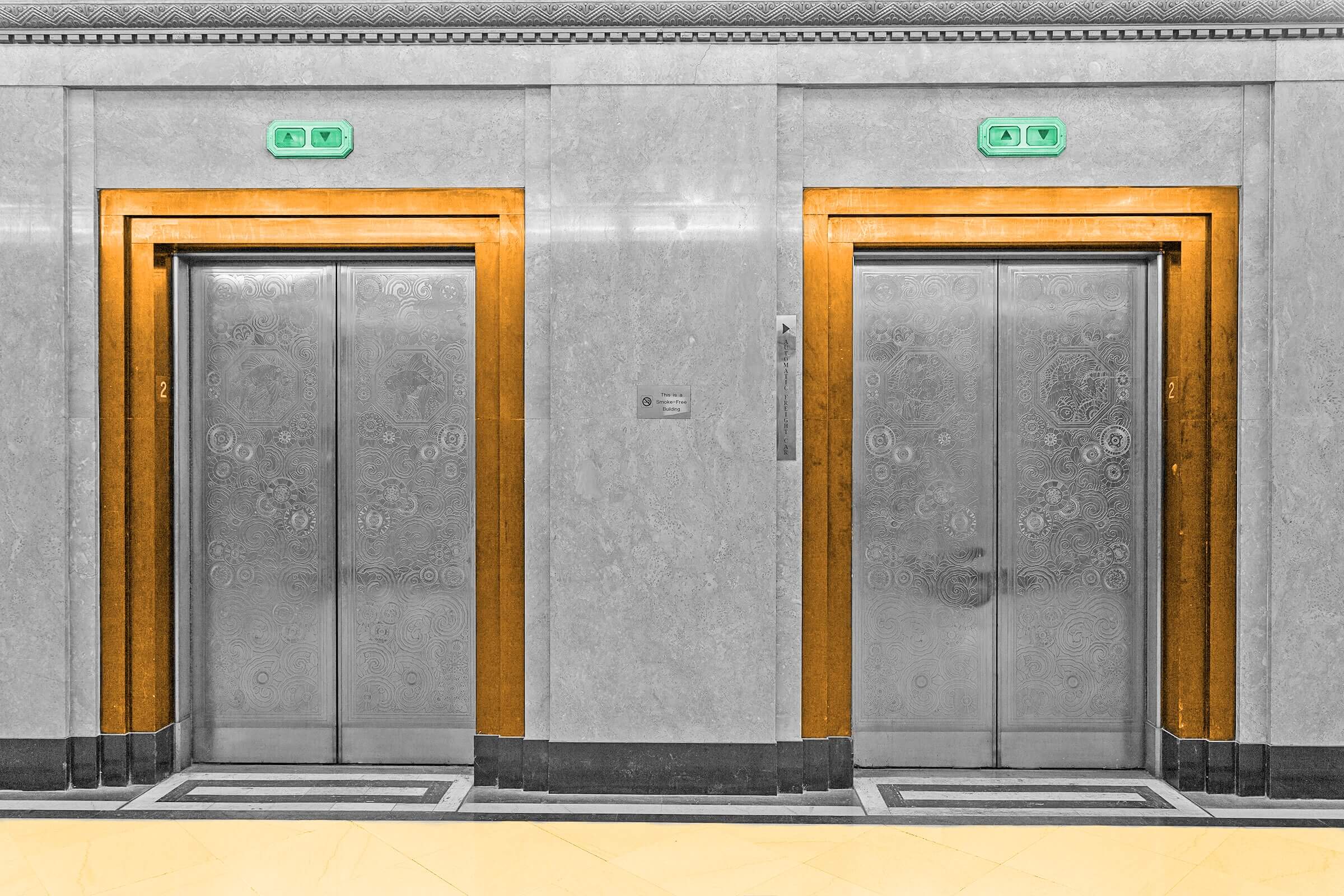

Today, riding an elevator is a mundane activity, but little more than two centuries ago, these mechanical contraptions were steam-powered, death-defying wonders. In the years since, these mostly unseen pieces of urban infrastructure have become a key part of what makes modern cities possible. Without them, a city’s upward trajectory would be impossible, and the design of our world would be unimaginably different. Here are six amazing facts about the humble elevator, from its surprisingly ancient origins to the many places it may take us in the future.
Greek Mathematician Archimedes Invented an Elevator in 236 BCE

The elevator is a surprisingly old invention. According to writings from the ancient Roman engineer Vitruvius (the same Vitruvius who inspired Leonardo da Vinci’s “Vitruvian Man”), the Greek mathematician Archimedes invented a primitive elevator back in 236 BCE. Archimedes’ contraption bore little resemblance to today’s people-movers: It worked via manpower, with ropes drawn around a drum that was then turned by a capstan, a large revolving cylinder often used to wind ropes on ships. Although the attribution was written after Archimedes’ death, the invention makes sense for the great Greek thinker, who was famous for his exploration of compound pulley systems. Elevators join the list of other surprising ancient inventions, including such wonders as the world’s first steam engine and the world’s first computer.
Before the Modern Elevator, Top Floors Were Undesirable

Today the most luxurious high rises are crowned with multimillion-dollar penthouses, but before the rise of elevators (pun intended), the most desirable floors were those closest to the ground. The first building to include elevators at the design stage was the 130-foot Equitable Life Building in downtown Manhattan, which was built in 1870. Society was slow to adjust to the elevator, and the building was designed to look like it had fewer floors than it did. Also, the insurance company that worked out of the building still occupied the “valuable” lower floors, while the custodian enjoyed the upper floors. The era of the penthouse didn’t arrive in full swing until the 1920s, when the decade’s economic boom brought a flurry of construction projects to New York City and other cities around the world.
An American Inventor Created the First Modern Passenger Elevator

A key part of the very first passenger elevator was invented by Elisha Graves Otis, who founded the Otis Elevator Company, a manufacturer still in business today. Otis invented a safety device that would prevent an elevator car from falling if the cable broke. Before Otis’ invention, elevators were dangerous contraptions primarily reserved for moving cargo in factories, warehouses, and mines. In 1854, Otis introduced his “safety elevator” at New York City’s Crystal Palace, also known as “Exhibition of the Industry of All Nations,” where he asked someone to cut the rope that was holding him up. Once cut, the platform dropped only a few inches before catching him. This enhanced safety feature helped sway public opinion by demonstrating that elevators could be a safe means of vertical transportation. Today, elevators are considered statistically safer than stairs.
People Once Trained for Years To Be Elevator Operators

Although Elisha Otis invented a safer elevator, that didn’t mean the device was foolproof. For decades, operating an elevator was considered a highly skilled job that required years of study in some parts of the world, such as Germany. In the late 19th century, elevators were operated using “shipper ropes,” and operators were trained on the precise timing of pulling these ropes to arrive at the right floor. A well-trained operator was highly desirable, since they made the difference between a smooth ride or a death-defying jumble of starts and stops.
Over the decades, the job of the elevator operator became increasingly automated. In 1887, American inventor Alexander Miles designed the first automatic elevator doors, after reading about several accidents involving people falling down elevator shafts. But it wasn’t until the 1960s — a little over a century after Elisha Otis introduced the first safety elevator — that automated elevator cars began to replace human operators entirely.
The Fastest Elevator in the World Travels Up to 67 Feet Per Second

In the early days, elevators could only travel at about 40 feet per minute. After some 150 years of innovation, the world’s fastest elevator can now travel 67 feet in a second (or around 46 miles per hour). This elevator is located in Shanghai Tower in China, which also includes the longest continuous elevator run, at 1,898 feet. Originally installed by the Japanese company Mitsubishi Electric in 2015, the elevator got an upgrade in 2016, allowing it to traverse a path from the second-level basement to the tower’s 119th floor in just 53 seconds. The elevator in the CTF Finance Center, also located in China, comes in a very close second, traveling at 65 feet per second.
German Engineers Designed a Sideways Elevator in 2017
Since their invention two millennia ago, elevators have done just two things — go up and go down. However, in 2017 a German elevator company began testing an elevator that can travel in any direction. Nicknamed the “Wonkavator” after the multidirectional elevator seen in 1971’s Willy Wonka & the Chocolate Factory, the machine was hailed as “the biggest development in the elevator industry” since the device’s invention. However, a sideways elevator is only the beginning of what’s in store for the technology’s future. Scientists (and sci-fi writers) have also hypothesized about the feasibility of a space elevator that can ferry future astronauts from the Earth’s surface to outer space — completely forgoing the need for expensive, pollution-belching rockets.
